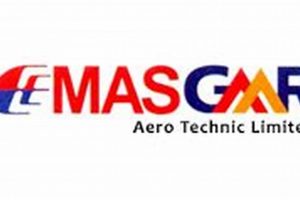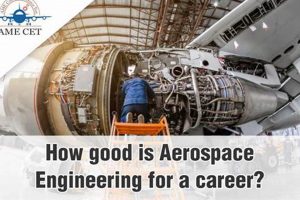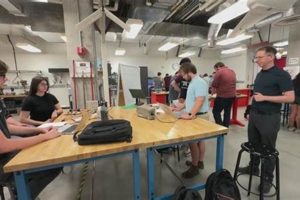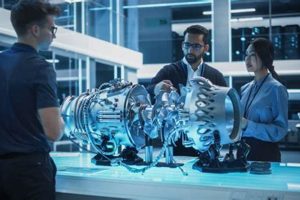The discipline encompassing the design, development, testing, and production of aircraft and spacecraft within the Australian context is a specialized field demanding a high degree of technical expertise. This applied science integrates principles from various engineering branches, including mechanical, electrical, and computer engineering, to create efficient and safe aerial and space-bound vehicles. For example, the development of unmanned aerial vehicles (UAVs) for agricultural monitoring or the design of satellite systems for communication exemplify this field’s practical applications within the country.
Its significance lies in the advancement of transportation, communication, defense, and scientific research capabilities. Historically, Australia has played a crucial role in aerospace innovation, contributing to advancements in aircraft design and satellite technology. The sector provides substantial economic benefits through job creation, technological innovation, and the development of exportable expertise. Furthermore, advancements in this area contribute directly to national security and Australia’s ability to respond to emergencies and environmental challenges.
This article will explore the specific challenges and opportunities within the Australian educational landscape, the research and development initiatives currently underway, and the industry sectors that are actively shaping the future of flight and space exploration in this nation. It will also examine the regulatory framework governing the field and the career pathways available to aspiring professionals.
The following provides concise advice for individuals pursuing or considering studies in aerospace engineering within Australia’s tertiary education system and subsequent career paths.
Tip 1: Solidify Foundational Knowledge: A strong grasp of mathematics, physics, and computer science is crucial. These subjects form the bedrock upon which advanced aerospace concepts are built. Consistent effort in these areas is paramount to success in subsequent studies.
Tip 2: Prioritize Practical Experience: Seek opportunities for internships or industry placements during studies. Experiential learning complements theoretical knowledge and provides valuable insight into real-world applications. Organizations such as the Defence Science and Technology Group (DSTG) or commercial aerospace firms often offer such placements.
Tip 3: Develop Specialized Skills: Identify specific areas of interest within aerospace engineering, such as aerodynamics, propulsion, or avionics, and focus on developing specialized skills in those areas. This targeted approach enhances employability and allows for deeper engagement with specific challenges.
Tip 4: Cultivate Professional Networks: Actively participate in professional organizations and attend industry events. Networking provides opportunities to connect with established professionals, learn about emerging trends, and discover potential career opportunities. Engineers Australia is a relevant organization for making connections.
Tip 5: Understand Regulatory Frameworks: Familiarize oneself with Australian aviation and space regulations, including those administered by the Civil Aviation Safety Authority (CASA) and the Australian Space Agency. Compliance with these regulations is essential for all aerospace activities within the country.
Tip 6: Emphasize Systems Engineering Principles: Aerospace projects are inherently complex and require a systems-level approach. Develop a strong understanding of systems engineering principles to effectively manage complexity and ensure that all components of a system work together harmoniously.
Tip 7: Stay Abreast of Technological Advancements: The aerospace field is constantly evolving. Continuously monitor advancements in materials science, propulsion technologies, and digital engineering to maintain a competitive edge and adapt to emerging challenges.
By proactively following these guidelines, individuals can maximize their potential for success in the challenging and rewarding field of aerospace studies and professional practice within Australia.
The following section will delve into the specific career opportunities available to those who have successfully navigated this demanding field.
1. Education & Training
Education and training form the cornerstone of a robust aerospace engineering sector within Australia. The quality and accessibility of these programs directly influence the talent pool available to the industry, shaping its capacity for innovation and growth. The following points elaborate on the key elements within this educational framework.
- Undergraduate Programs
Universities across Australia offer undergraduate degrees in aerospace engineering or related fields such as mechanical engineering with an aerospace specialization. These programs provide foundational knowledge in areas like aerodynamics, propulsion, structures, and control systems. Successful completion of these programs is typically the minimum requirement for entry-level positions in the industry.
- Postgraduate Studies
Advanced research and specialization are facilitated through postgraduate programs, including Master’s and Doctoral degrees. These programs enable students to delve deeper into specific areas of interest, contributing to cutting-edge research and development. Funding opportunities, such as government grants and industry sponsorships, are often available to support postgraduate research activities.
- Vocational Training and Apprenticeships
Beyond university degrees, vocational training and apprenticeships provide pathways for individuals seeking careers as aircraft maintenance engineers, technicians, and other skilled tradespeople. These programs focus on practical skills and industry-specific certifications, ensuring a steady supply of qualified personnel to support the operation and maintenance of aircraft and related systems.
- Continuing Professional Development
The aerospace field is characterized by rapid technological advancements. Continuing professional development programs, including workshops, conferences, and online courses, are crucial for engineers and technicians to maintain their skills and knowledge. These programs often cover emerging technologies, new regulations, and best practices in the industry.
In conclusion, the Australian aerospace engineering sector relies on a multi-faceted education and training ecosystem. This encompasses traditional university programs, vocational training pathways, and ongoing professional development opportunities. The strength of this ecosystem is directly correlated to the industry’s ability to attract, retain, and develop the skilled workforce necessary for sustained growth and innovation in the national and global aerospace landscape.
2. Research Opportunities
Robust research opportunities are essential for the advancement of the aerospace engineering sector within Australia. These opportunities drive innovation, foster technological development, and contribute to the nation’s standing in the global aerospace community. A supportive research environment attracts talent, encourages collaboration, and translates theoretical knowledge into practical applications.
- University-Led Research Programs
Australian universities are at the forefront of aerospace research, conducting investigations in diverse areas such as aerodynamics, propulsion systems, composite materials, and autonomous flight. These programs provide opportunities for postgraduate students and researchers to contribute to cutting-edge knowledge and develop novel technologies. For example, universities may collaborate with industry partners to develop more efficient aircraft designs or to explore the potential of hypersonic flight. Funding for these projects often comes from government grants, industry sponsorships, and international collaborations.
- Government Research Agencies
Government agencies, such as the Defence Science and Technology Group (DSTG), play a crucial role in conducting and supporting aerospace research related to national security and defense capabilities. These agencies focus on developing advanced technologies for surveillance, communications, and weapons systems. DSTG also collaborates with universities and industry partners to leverage their expertise and resources. The research conducted by these agencies contributes to Australia’s ability to maintain a technological advantage in the defense sector.
- Industry-Sponsored Research
Aerospace companies in Australia often invest in research and development to improve their products and services. This can take the form of internal research programs or collaborations with universities and research institutions. Industry-sponsored research is typically focused on solving specific technical challenges and developing commercially viable technologies. For instance, an aircraft manufacturer may partner with a university to develop more fuel-efficient engines or to improve the structural integrity of aircraft components. These collaborations provide valuable opportunities for students and researchers to gain practical experience and contribute to real-world applications.
- International Research Collaborations
International collaboration is essential for addressing complex aerospace challenges that require expertise and resources beyond national boundaries. Australian researchers often collaborate with international partners on projects related to space exploration, satellite technology, and advanced aircraft design. These collaborations provide access to cutting-edge facilities, diverse perspectives, and larger funding pools. For example, Australian researchers may participate in joint projects with NASA or the European Space Agency (ESA) to develop new technologies for space exploration or to monitor climate change from space.
These diverse research opportunities collectively contribute to the vitality and growth of aerospace engineering in Australia. By fostering innovation, attracting talent, and promoting collaboration, these initiatives strengthen Australia’s position as a significant player in the global aerospace arena. The translation of research findings into practical applications enhances national security, drives economic growth, and improves the quality of life for all Australians. Continued investment in research and development is crucial for ensuring the long-term success of the aerospace engineering sector.
3. Industry Collaboration
Within “aerospace engineering in Australia,” industry collaboration constitutes a vital mechanism for translating research and development into tangible outcomes. It facilitates the exchange of knowledge, resources, and expertise between academic institutions, government entities, and commercial enterprises. This synergistic relationship is essential for fostering innovation, driving economic growth, and enhancing the competitiveness of the Australian aerospace sector on a global scale.
- Joint Research Projects
Collaborative research projects between universities and industry partners are a common feature. These projects allow companies to access the expertise and facilities of academic institutions while providing researchers with opportunities to address real-world challenges and develop commercially viable technologies. For instance, a collaborative project might focus on developing new composite materials for aircraft structures or improving the efficiency of aircraft engines. These projects often receive funding from government grants or industry investments.
- Internships and Graduate Programs
Industry collaboration extends to providing opportunities for students and graduates to gain practical experience through internships and graduate programs. These programs expose students to the realities of the aerospace industry and allow them to apply their theoretical knowledge to solve practical problems. Internships and graduate programs also provide companies with a pipeline of talented individuals who are familiar with their operations and culture, potentially leading to long-term employment opportunities.
- Industry Advisory Boards
Many university aerospace engineering programs have advisory boards comprised of industry representatives. These boards provide valuable feedback on curriculum development, ensuring that programs remain relevant and aligned with the needs of the industry. Advisory boards also help to identify emerging trends and technologies that should be incorporated into the curriculum, preparing students for the challenges of the future.
- Technology Transfer and Commercialization
Collaboration between research institutions and industry facilitates the transfer of technology from the laboratory to the marketplace. This can involve licensing intellectual property, forming spin-off companies, or partnering with existing companies to commercialize new technologies. Technology transfer is crucial for translating research breakthroughs into practical applications that benefit the aerospace industry and the wider economy. For example, a university-developed sensor technology for monitoring aircraft engine performance could be licensed to an aerospace company for integration into its products.
These collaborative endeavors directly impact the advancement of “aerospace engineering in Australia.” By fostering innovation, promoting skills development, and facilitating technology transfer, industry collaboration strengthens the entire ecosystem and contributes to the long-term success of the sector. The ongoing commitment to these partnerships is critical for maintaining Australia’s competitiveness in the global aerospace market and realizing the full potential of its research and development efforts. The strength of these partnerships directly influences Australia’s capacity to develop cutting-edge aerospace technologies and attract investment in the sector.
4. Government Regulation
Government regulation forms a crucial framework for “aerospace engineering in Australia,” influencing safety standards, operational procedures, and technological development. The Civil Aviation Safety Authority (CASA) is the primary regulatory body, responsible for overseeing airworthiness, pilot licensing, and air traffic management. Strict adherence to CASA regulations is mandatory for all aerospace activities, ensuring the safety of passengers, crew, and the general public. These regulations often dictate design specifications for aircraft, maintenance schedules, and operational limitations. Failure to comply can result in significant penalties, including fines and the revocation of operating licenses.
Beyond safety, government regulation also impacts innovation and economic growth within the sector. The Australian Space Agency, established in 2018, plays a key role in fostering the development of the space industry through strategic initiatives and regulatory frameworks. This agency is responsible for promoting space-related research, facilitating international collaborations, and ensuring that Australia’s space activities align with national interests and international obligations. Regulations governing space launch activities, satellite operations, and the use of space-based technologies are essential for creating a predictable and sustainable environment for investment and innovation. These regulations often involve balancing the need for technological advancement with concerns about national security and environmental protection.
Understanding the intricacies of government regulation is paramount for professionals in “aerospace engineering in Australia.” Compliance is not merely a legal requirement but also a fundamental aspect of ethical practice and responsible innovation. Navigating the regulatory landscape requires a thorough understanding of relevant laws, standards, and procedures. Moreover, ongoing engagement with regulatory bodies is essential for staying abreast of changes and contributing to the development of effective and balanced regulations that support the growth and sustainability of the aerospace sector. The effectiveness of government regulation directly influences public trust in the industry and its ability to attract investment and talent.
5. Defense Applications
Defense applications constitute a significant driver for aerospace engineering within the Australian context. The need for advanced military capabilities fosters research and development in areas such as unmanned aerial vehicles (UAVs), advanced surveillance systems, and high-performance aircraft. These requirements stimulate innovation and technological advancements that often have broader applications beyond the defense sector. For instance, advancements in composite materials for military aircraft can also benefit the commercial aviation industry, leading to lighter, more fuel-efficient aircraft.
The Australian Defence Force (ADF) relies heavily on aerospace technology for various operations, including intelligence gathering, border patrol, and combat support. This reliance creates a demand for skilled aerospace engineers to design, develop, and maintain these systems. The Defence Science and Technology Group (DSTG) plays a critical role in conducting research and development to support the ADF’s aerospace needs. DSTG collaborates with universities and industry partners to develop cutting-edge technologies and to ensure that the ADF maintains a technological advantage. Examples include research into hypersonic technologies, advanced radar systems, and autonomous flight control systems.
The intersection of defense applications and aerospace engineering in Australia presents both opportunities and challenges. While defense spending can drive innovation and economic growth, it also raises ethical considerations related to the development and use of military technologies. Balancing the need for national security with the responsible application of aerospace engineering expertise is a key challenge for the industry. Furthermore, attracting and retaining skilled engineers in the defense sector requires competitive salaries, challenging projects, and opportunities for professional development. Addressing these challenges is essential for ensuring that Australia maintains a strong and capable aerospace engineering workforce to support its defense needs.
6. Space Exploration
Space exploration represents a frontier driving innovation and specialized capabilities within the Australian aerospace engineering sector. Activities in this domain necessitate expertise in satellite technology, propulsion systems, and remote sensing, which directly influence the development of advanced technologies and skillsets nationally.
- Satellite Development and Operations
Australia’s involvement in space exploration is significantly marked by its role in satellite development and operations. This includes designing, building, and launching satellites for communication, Earth observation, and scientific research. For instance, the development of nanosatellites by Australian universities and companies showcases the country’s growing expertise. The operational aspects involve managing satellite orbits, data acquisition, and telemetry, requiring specialized aerospace engineering skills.
- Launch Capabilities and Infrastructure
The establishment of launch facilities in Australia, such as the Arnhem Space Centre, signifies a commitment to providing sovereign launch capabilities. This development demands expertise in rocket propulsion, launch vehicle design, and orbital mechanics. Furthermore, the construction and maintenance of launch infrastructure necessitate specialized engineering skills in areas like structural analysis, fluid dynamics, and control systems.
- Remote Sensing and Data Analysis
Aerospace engineers in Australia are increasingly involved in analyzing data acquired from space-based sensors. This includes developing algorithms for processing satellite imagery, monitoring environmental changes, and supporting disaster management efforts. These activities require a strong understanding of remote sensing principles, data analytics, and image processing techniques. For example, the use of satellite data for monitoring bushfires and assessing environmental damage highlights the practical applications of this expertise.
- Space Situational Awareness
Maintaining awareness of objects in space, including satellites and debris, is crucial for ensuring the safety and sustainability of space activities. Australian aerospace engineers contribute to space situational awareness by developing and operating radar systems, optical telescopes, and analytical tools for tracking space objects. This requires expertise in orbital mechanics, signal processing, and data fusion. Australia’s geographical location provides a strategic advantage for monitoring space objects in the Southern Hemisphere.
These facets underscore the integral role of “aerospace engineering in Australia” in advancing the nation’s space exploration agenda. The expertise cultivated through these activities not only contributes to scientific discovery but also enhances Australia’s technological capabilities and economic opportunities in the global space market. Continued investment and strategic planning are essential for maximizing the benefits of space exploration for the Australian aerospace sector.
Frequently Asked Questions
The following section addresses common inquiries regarding the field of aerospace engineering within the Australian context. The aim is to provide clear and concise information to prospective students, industry professionals, and the general public.
Question 1: What specific qualifications are required to practice as an aerospace engineer in Australia?
A bachelor’s degree in aerospace engineering, or a closely related field such as mechanical engineering with an aerospace specialization, is generally the minimum requirement. Accreditation from Engineers Australia is highly desirable, as it demonstrates that the degree program meets recognized professional standards. Furthermore, some positions may require specific certifications or licenses, depending on the nature of the work.
Question 2: What are the primary sectors of employment for aerospace engineers in Australia?
Employment opportunities exist in various sectors, including commercial aviation, defense, space technology, and research institutions. Commercial aviation companies employ aerospace engineers for aircraft design, maintenance, and operations. The defense sector requires engineers for developing and maintaining military aircraft and related systems. The emerging space industry offers opportunities in satellite design, launch operations, and data analysis. Research institutions provide avenues for conducting cutting-edge research and development in aerospace technologies.
Question 3: How does the Australian aerospace industry compare to those in other countries?
While smaller than the aerospace industries in countries like the United States and Europe, the Australian sector possesses unique strengths in niche areas such as remote sensing, unmanned aerial systems, and hypersonics. Furthermore, Australia’s strategic location and strong research capabilities make it an attractive partner for international collaborations. The Australian Space Agency is actively working to foster growth and innovation within the sector.
Question 4: What role does government regulation play in the Australian aerospace industry?
Government regulation, primarily through the Civil Aviation Safety Authority (CASA), ensures the safety and airworthiness of aircraft and aviation operations. CASA sets standards for aircraft design, maintenance, and pilot licensing. The Australian Space Agency also plays a regulatory role in the space sector, overseeing launch activities and satellite operations. Compliance with these regulations is mandatory for all aerospace activities in Australia.
Question 5: What are some of the key research areas in aerospace engineering currently being pursued in Australia?
Current research focuses on a range of topics, including advanced composite materials, hypersonic flight, autonomous systems, and space situational awareness. Australian universities and research institutions are actively involved in these areas, often in collaboration with industry partners. Funding for research comes from government grants, industry sponsorships, and international collaborations.
Question 6: What are the long-term career prospects for aerospace engineers in Australia?
The long-term career prospects are generally positive, driven by increasing demand for air travel, the growing importance of space-based technologies, and ongoing investment in defense capabilities. However, the specific opportunities available may vary depending on economic conditions and government policies. Continuous professional development and adaptation to emerging technologies are essential for maintaining a competitive edge.
In summary, the Australian aerospace engineering sector presents a diverse range of opportunities and challenges. A strong educational foundation, combined with continuous learning and adaptation, is crucial for success in this dynamic field.
The following section will provide resources for further exploration of aerospace engineering opportunities in Australia.
Conclusion
This article has explored the multifaceted landscape of aerospace engineering within Australia. The examination encompassed educational pathways, research endeavors, industry collaborations, governmental oversight, defense applications, and space exploration initiatives. Each of these domains contributes uniquely to the overall health and future trajectory of the field. A robust educational infrastructure underpins a skilled workforce, while strategic research initiatives drive technological advancements. Effective industry partnerships facilitate the translation of theoretical knowledge into practical solutions, and appropriate governmental regulations ensure safety and promote innovation.
Sustained investment in these critical areas remains paramount for ensuring the continued growth and competitiveness of “aerospace engineering in Australia.” A commitment to fostering innovation, nurturing talent, and promoting collaboration will be essential for realizing the full potential of this sector and securing Australia’s position as a significant contributor to the global aerospace community. Future success depends on proactive adaptation to evolving technological landscapes and a steadfast dedication to excellence.







![Best Aerospace Engineering Colleges in Kentucky [Ranked] Innovating the Future of Flight with Reliable Aviation Solutions Best Aerospace Engineering Colleges in Kentucky [Ranked] | Innovating the Future of Flight with Reliable Aviation Solutions](https://mixaerospace.com/wp-content/uploads/2025/12/th-760-300x200.jpg)